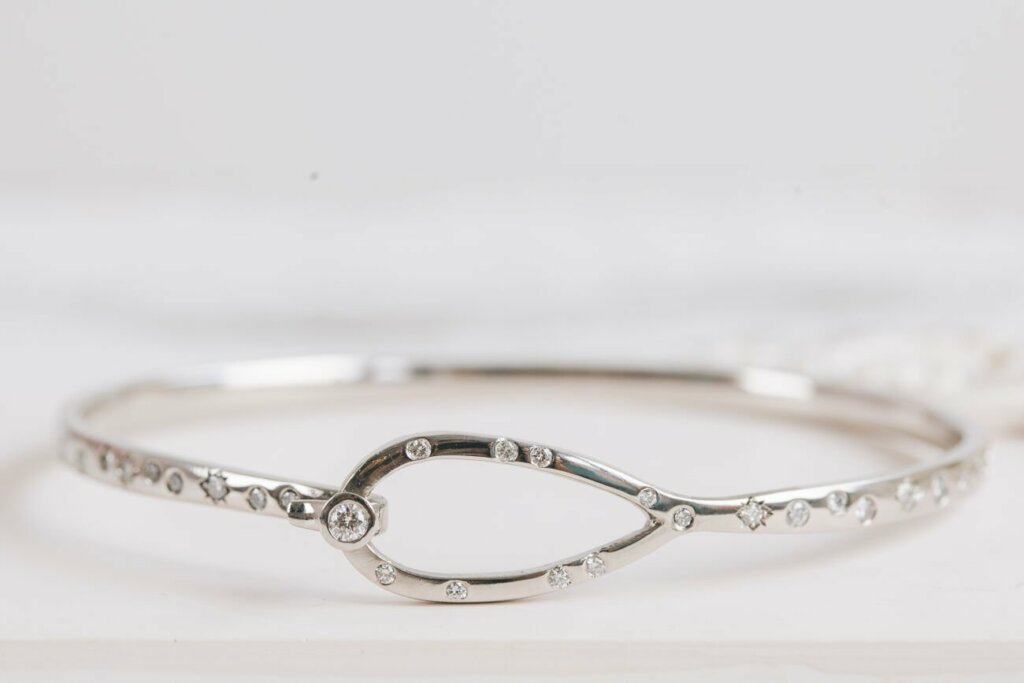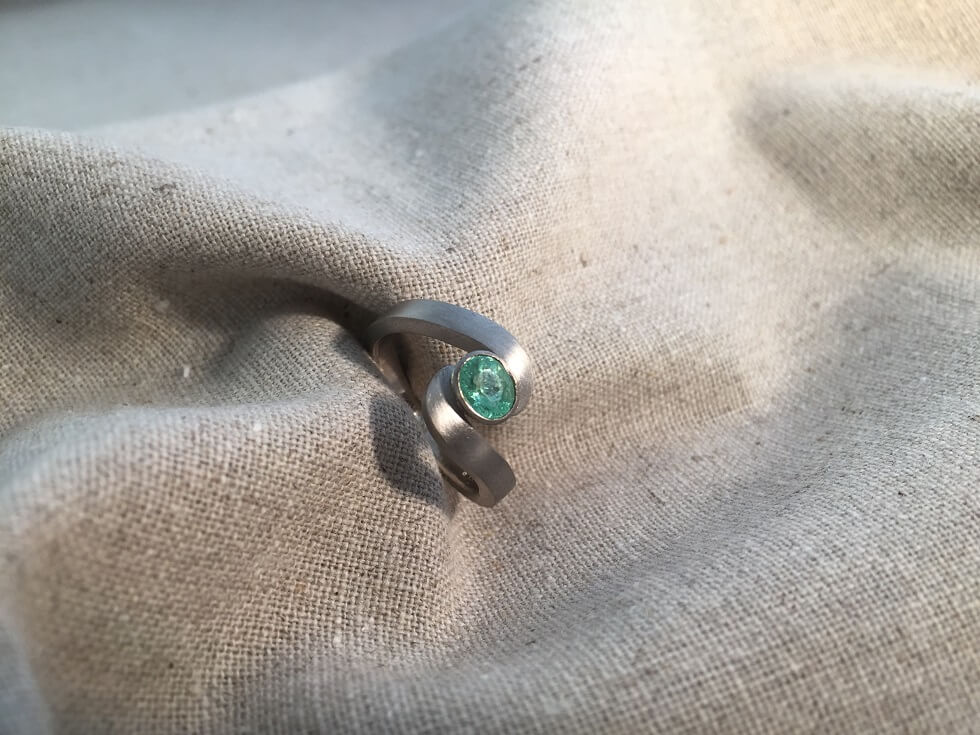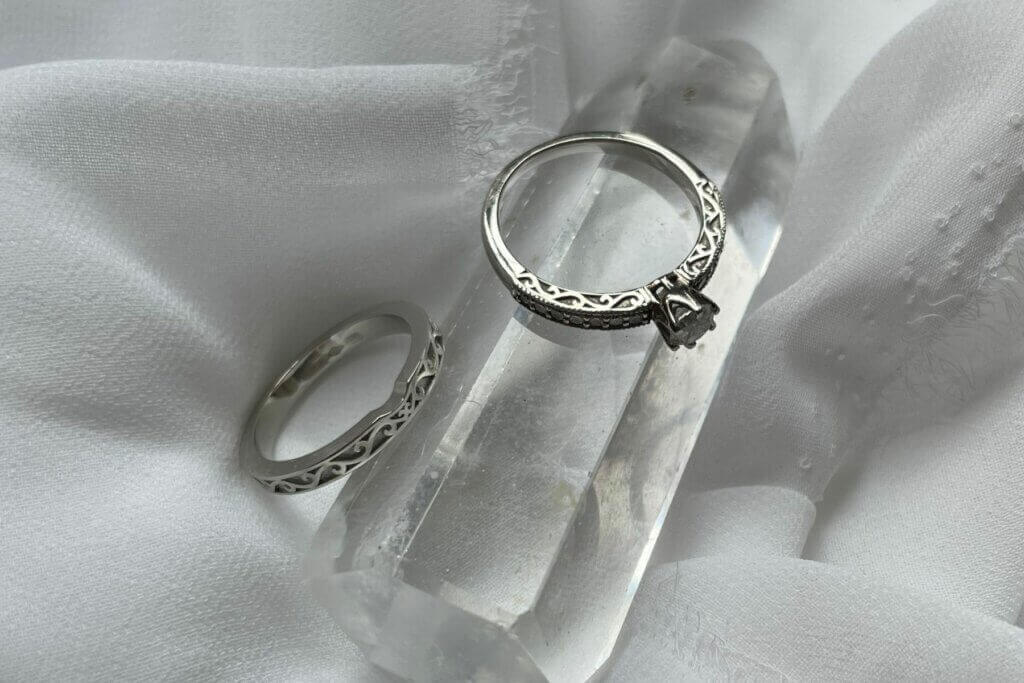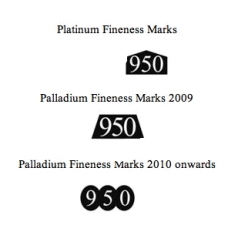


Palladium
Palladium Facts:
- Has a similar cool, steely appearance to Platinum
- A by-product of Platinum mining.
- More durable than Platinum, yet much lighter to wear.
- Priced higher than Platinum and 18ct white gold
More about Palladium
Palladium is a rare, white precious metal, first discovered by William Hyde Wollaston in 1803, however it only gained a legal hallmark in 2009.
Palladium is from the same family of metals as Platinum and has the same icy colour. The key differences are that Palladium is about 12% harder but 40% less dense than Platinum, which results in a considerable difference in weight.
The fineness of both Platinum and Palladium used in jewellery is 95%, so the fineness stamp in their hallmarks are the same number, 950 (which refers to 950 parts out of 1000 being pure). In 2009, the original stamp for Palladium was very similar to Platinums’, so was changed in 2010 to three overlapping elipses. Platinum has an orb stamped as part of it’s hallmark, and Palladium includes the image of Pallas, the Greek God it was named after to differentiate them further.
Pros and Cons of Palladium Jewellery
Palladium has some really interesting ethical attributes – it is not mined for in itself, but is actually just a by-product of Platinum mining.
Cost wise, Palladium is a good choice for tight budgets – you’ll get the same colour as Platinum with no need to re-rhodium plate unlike white gold – but at a more purse friendly price. Palladium currently costs somewhere between 18ct white gold and Platinum.
The weight of palladium, just like Platinum, divides opinion. Some people prefer the more lightweight feel of Palladium in comparison to the weight of Platinum; I have found that a lot of men like Palladium for their wedding rings because they are not used to wearing jewellery and find Platinum too heavy. However, some people find its lack of weight a bit disconcerting and prefer to feel the weight of their jewellery.
Enjoyed this? Find out more in my blog all about Platinum and Palladium.


